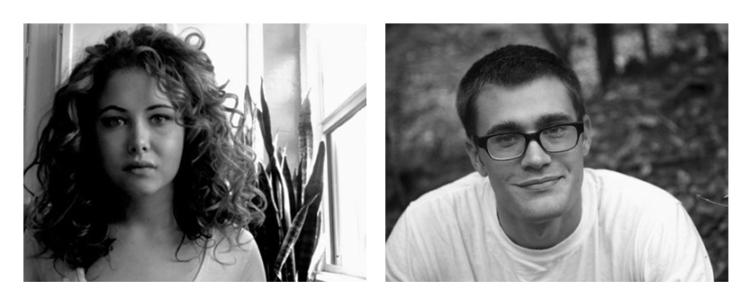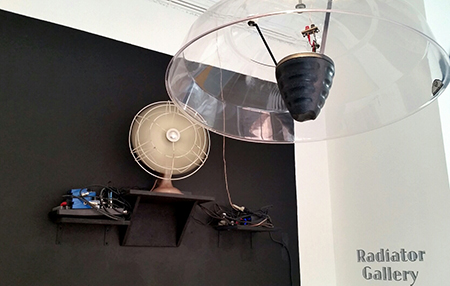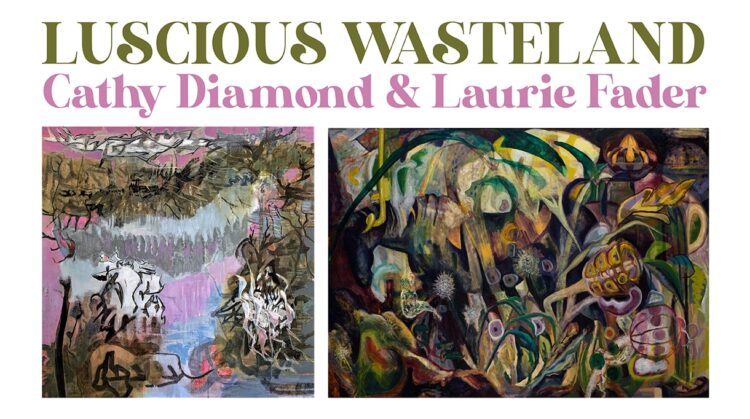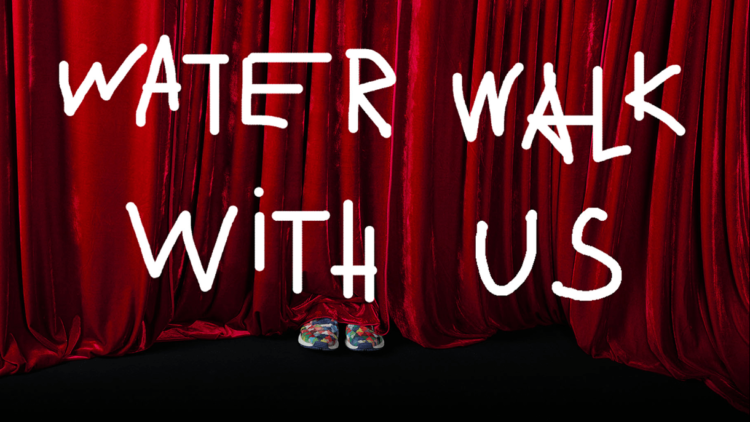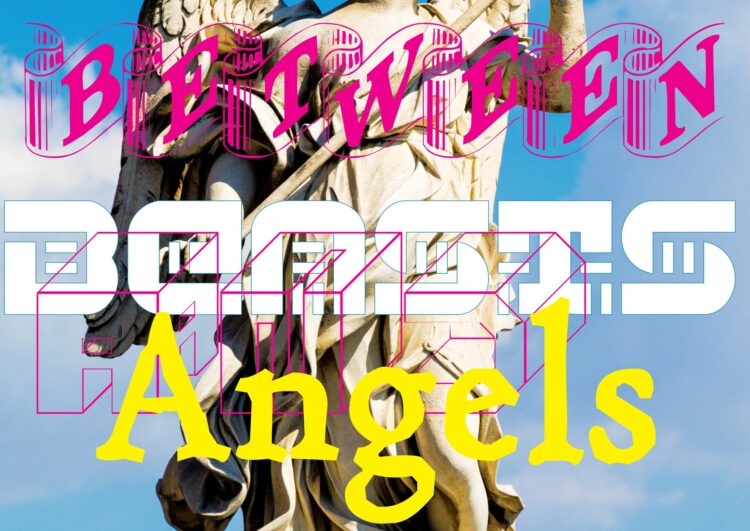Collaborative exercise by Radiator Gallery, New York and Structura Gallery, Sofia
Curated by Boris Kostadinov for Radiator Gallery, New York and Structura Gallery, Sofia
Online Launch: October 12, 2021 1 pm New York time, 7 pm Sofia time
Location: www.whatisnormal2021.com
“….man’s place in the universe is somewhere between the beasts and the angels, but, because of the divine image planted in him, there are no limits to what man can accomplish….”
― Giovanni Pico della Mirandola, The Oration on the Dignity of Man, 1486
The title of our project is a quotation from The Oration on the Dignity of Man, by Giovanni Pico della Mirandola, a conscious gesture that positions it in the Renaissance context. This context at once manipulates and interprets the idea of digital anthropocentrism. The cultural coup of the Renaissance in the 15th and the 16th-century centered on the concepts of man by juxtaposing them with God’s hierarchy. In the 21st century, the meaning of cultural processes is exceedingly similar, yet today, making sense of what is human takes place by comparing it with the ultimate universe of the technological.
In 2020, Gerd Leonhard, the author of Technology vs. Humanity, wrote: “The first Renaissance replaced religious dogma with human curiosity and creativity. The second renaissance will replace technological dogmas such as connectivity, efficiency, speed, optimization and productivity with human relevance, purpose, engagement, relationships and self-realization.”[1]
The questions that Between Beasts and Angels poses go beyond how new technologies function in contemporary art. It is much more important to look deeper into the layers of the heterogeneous digital community — its practices, policies, economies, creative potential, digital ethics and aesthetics, education and what constitutes taste in the approaching new era of our communication with the type and nature of art, and also of course with the dimensions of the activities of the artist and his place, as well as the meaning and form of his public body.
Between Beasts and Angels presents online works of art by 11 remarkable artists. For them, the New Media Age is a natural environment for the development of their ideas and the pursuit of their careers.
It is critical to point out at the outset that the project is based on works of art that exist solely in a digital environment. Put simply, this is art that was started and completed “as a file.” That is why the principle of the mechanical, online arrangement of images and text was eliminated. The project is also not about the routine use of information technologies for the production of art objects — a digital print, 3D object or film — which could eventually live their own material life in a physical exhibition space. The exhibition’s only environment for display and development is the online dimension.
And it is because the project lives entirely in the ecosystems of the digital ocean, looking at it, assimilating it and analyzing it critically suggests empathy, understanding, and of course a technological experience in and curiosity for artificial intelligence and the artistic activities of a huge portion of today’s humankind.
In the last decade, an increasing number of researchers and experts have been comparing the New Media Age with the time of the Renaissance,[2] referring to how similar the practically unlimited possibility for mobility and accessibility of digital works of art are with processes in the 16th century, when painting on canvas enabled the works of Venetian artists, freed from the Church’s ultimate context, to travel and find new publics. Also the personality of the artist acquired a new meaning in society.
On its part, the New Media Age gives very large groups the opportunity to create and showcase their art beyond the limitations imposed by the classic art market or the physical exhibition spaces in the same way as Renaissance artists pushed art away from the dogmas of religious needs and elevated it to an autonomous and independent phenomenon.
Do the times of the Third Industrial Revolution make things look like they were during the Renaissance?
To answer this, we need to tackle something that we’re all have long gotten bored with. Yet however reluctant we may find ourselves to once again write “COVID-19,” we cannot afford to ignore the pandemic: it imposed new social and economic relations, which were cast in political molds and became daily policies. Two years are but a blip in the course of world history, but in this period our world has gone a long, long way. As a result, today we experience online communication as more natural than anything else. We use screens to watch and analyze everything, to practice and consume everything — remote work, music, cinema, literature and sports, shopping and meetings with friends, family gatherings. Screens of all types have made possible what we call “living,” and we use these same screens to submit all our personal data with the sole purpose of continuing to exist.
Undoubtedly, COVID-19 has brought everything to an extreme and extraordinary existentiality. Yet is this pathos of experience not an entirely logical part and nothing but an element of a long chain of processes that started some 10 years ago?
There is no point in digressing in naive suppositions and imagining how things would have developed had the coronavirus appeared, for example, in the 1980s. Things would naturally have been utterly different, and of course common sense leads us to think that COVID-19 is just the thunderous ending of a revolution predicted, and indeed started, some 10 years ago.
When Jeremy Rifkin published, in 2011, his The Third Industrial Revolution,[3] we were still somewhat “diffidently” using phrases such as “life on Earth cannot go on without artificial intelligence” or “technologies and the future are synonymous.” Ten years later, we have seen such phrases undergo the fast evolution from semi-conspiratorial theories to mass media clichés. The past decade has made the digital revolution an undisputed fact, and the Western world is now living as a developed post-industrial society that would not stand a chance without the assistance of artificial intelligence.
Indeed, we need to mention these now-established truths from the last decade — they constitute the groundwork for the Between Beasts and Angels project.
The history of art knows that each revolution of the technological or social order naturally changes not only the style of art but also, and this is most important, the nature of art’s intellectual activity and its place in the structure of culture of a society at a specific historical moment.
In the 21st century, the Third Industrial Revolution revealed an unexpected conservatism in the so-called art world which barely existed at the end of the 20th century. We all remember the enthusiasm that artists had for the “new media,” the democratic nature and utopian optimism of the net-art activism and online art communities of the 1990s. It appears that all that ended in the last decade on the 20th century, and was eventually abandoned. Despite the fact that the discussions, in the mid-2000s, of Marisa Olson, Gene McHugh and Artie Vierkant resulted in the rise of the term Post-Internet,[4] the art community was not too keen to welcome what this term stood for.
Starting in 2000 to 2003 and up to the emergence of the SARS-CoV-2 in 2019, the art world chose to forget its own intentions from the 1990s, and remained in its good old postmodern framework of physical institutions (museums, galleries, biennials, art fairs, foundations). The market was kept alive mostly by physical, tangible artworks, as well as works produced non-digitally and distributed offline.
If, summoning all the cynicism we are capable of, we could point to anything positive in COVID-19 and the resulting fallout, it is that the pandemic brought a striking, total reconsideration of art, its great return and rehabilitation in a digital environment. Today, the international art community adopts and exploits — as if anew and faster than at any past moment — virtual opportunities for creating, consuming and distribution of contemporary art.
Understandably, we would be naive to think that suddenly and right now some universal mania has emerged of reconsidering the aesthetic criteria of the virtual world and its art works. Here, as always, trends were set by economic mechanisms and the market. Unable to travel, lacking access to international exhibitions and confronted with shuttered museums and galleries, the art market could not afford to go bankrupt. It is when the non-fungible tokens (NFTs) came to the rescue. In itself, this cryptocurrency could be seen as a work of art, as it is so unlike anything we’ve seen so far that it even managed to establish a sort of order and a sense of security to the market of digital arts, which has been reeling for years. Here we will not go into the special cases, market paradoxes and speculations that the NFTs brought about, yet each renaissance is of course underpinned by economic forces and has financial dimensions.
As mentioned, in Between Beasts and Angels focuses chiefly on the artwork’s new position, on the artist and the audience during the Third Industrial Revolution. That is what makes these aspects important in the context of NFTs.
Our technological history has taught us that each innovation emerges with a great deal of democratization and openness. In the case of NFTs, it appears that both the art scene and the art market have divided the territory much more equitably.
First, the art world has become much more fluid and multifaceted. The conservative and pretentious system of quality assessment that large institutions had imposed on contemporary art is no longer the sole criterion of who can exhibit art, when and where. Art to be bought, re-sold or put on view in virtual galleries and museums.
Second, many artists have been creating free content for years, ensuring internet traffic to giant social media platforms such as Instagram and Facebook. They can now receive legally based compensation for their work.
Third, a considerable group of collectors has emerged who had never bought art from a physical gallery or at an art fair. In the same way in which Renaissance art was able to find its new connoisseurs in the rising bourgeoisie, we are today witnessing a seismic shift in how art is consumed.
NFT’s fourth and most important role is that it has introduced the innovative concept that the value of a piece of the visual arts can lie solely in its idea and concept, not in the physical material it is made of. Now this fact — whose revolutionary nature is of renaissance scale and has been self-evident for centuries in the realms of music and literature — is now totally valid also for the visual arts; it has eliminated the entire concept of physicality. In this sense, the 20th century Conceptual Art, which strove to dematerialize the works of art in order to confront the physical nature of the capitalist market, has now been historically refuted in this ambition. Using NFTs, the post-capitalistic 21st century shows us that in order to sell globally, an art product does not need to exist physically.
These four characteristics are sufficient grounds for the start of the assimilation of the new social meaning of the artist through his economic activities, as well as the new place of technological art in how values are ranked — as a product of a unique intellectual activity.
Today the value of online art is very often questioned because of its excessive (indeed unlimited) accessibility by everyone who wants to experience it. It is about time we reconsidered also this hoary idea of “uniqueness.” On the one hand, each digital work of art is in fact “unique” mainly because each device or screen is unique — because of different formats, screen resolutions or rates of data transfer, among a host of characteristics.
On the other hand, and perhaps most important, there are cultural, social and political differences that serve as prisms for looking at art across the world, or even the millions nuances of consumers’ personal sensibility.
Here we should lay stress on the importance of the public who consume digital art. To a large degree, Between Beasts and Angels (and digital arts as a whole) relies on its active interaction with the audience. This is one more piece of renaissance democratization, one that gives the spectator the opportunity to almost become a (real-time) co-creator.
Recently, a wave of somewhat amusing curatorial debates has emerged that analyze the way of looking at virtual exhibitions. Do we have the right, while looking an online exhibition, to pause to check our email or text somebody? It is this that prompted Lev Manovich to pose the question, “Can communication between users become the subject of an aesthetic?”[5]
As mentioned earlier, this is to a large extent a question of online curating, and my humble curatorial opinion is that, yes, as the open interaction of this art is not only technologically conceived but also very often consciously sought, spectators’ interventions are not only expected, but are indeed taken into account prior to the start of the creation of an artwork. The spectator’s interference is quite often an inherent part of the work of art.
To determine the perimeter of our audience, we need to look at this “new digital democratization” also by way of some historical and essentially restrictive concepts of history and theory of art. We mentioned already that the audience needs to be familiar with, informed about and sympathetic to digital realities. As this form of art uses a certain set of instruments of the dialogue with screen and the functions of machine intellect, so its audience, as an active participant in this dialogue, must necessarily be familiar with these instruments, their qualities and capabilities.
We mentioned also the importance of geography, culture, the history, the current societal climate of the specific location where the work is being taken in. Incidentally, we know that this is the central factor for interpreting any work of art, and in any historical context.
For example, Between Beasts and Angels is a project for both the New York-based Radiator Arts and the Structura Gallery in Sofia. The exhibition’s website looks the same no matter where its visitors choose to access it from. But does this mean that the responses and interpretations of visitors in New York and Sofia will be identical? Similarly, will responses be different, for example, in Seoul, Havana, Baghdad or Melbourne?
The answers to these questions are perfectly unequivocal, mainly on account of the different history of the interaction with the digital, the different practices, ways of behaving, knowledgeability, as a product of the different cultural/technological geography.
Let us try to imagine how two remarkable Renaissance works, both created in the same era, would have been evaluated had their locations been switched. For example, let’s suppose that Titian’s Danaë had been shown to the 16-century citizens of Antwerp. What would their reaction have been? And if at the same time Pieter Bruegel the Elder’s Peasant Wedding had been displayed in some Venetian palace? How would the local public have viewed it?
In fact, the democratic nature of Renaissance art was never about all-accessibility and mass consumption. That is the reason that the actual technological all-accessibility of the “Digital Renaissance” is not the lingua franca that would make our aesthetic, critical or thought response to contemporary digital art at once easier and uniform, and also popular.
Overall, the works in Between Beasts and Angels make an attempt at starting a discussion based on the mechanisms of this new interaction between the human and the art, engaging in a reciprocation in which the machine is the central instrument, inspirator and mediator.
Boris Kostadinov
Berlin, May, 2021
[1] Gerd Leonhard, 2020 Will Bring A New Renaissance: Humanity Over Technology, Forbes, Jan 5, 2020.
[2] Filippo Lorenzin, The Rise of Mobile Art, From the Renaissance to the Digital Anthropocene, Hyperallergic, December 1, 2020.
[3] The Third Industrial Revolution; How Lateral Power is Transforming Energy, the Economy, and the World, Palgrave MacMillan, 2011.
[4] Régine Debatty, Interview with Marisa Olson, We Make Money Not Art, (2008) https://we-make-money-not-art.com/how_does_one_become_marisa/.
[5] Lev Manovich, The Language of New Media (Cambridge, MA: MIT Press, 2001), 163–64.

